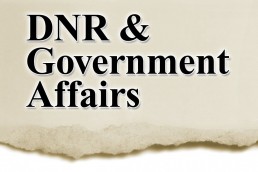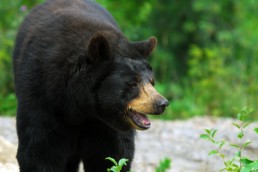DNR Makes Strides in Enhancing Outdoor Opportunities in 2015
SHARE THIS POST
A record number of people visited Minnesota state parks and enjoyed trout fishing in lakes and streams in 2015, according to the Department of Natural Resources.
The agency noted other accomplishments in 2015, including a growing deer herd and increased deer harvest, an improved fleet of aircraft for fighting wildfires, more acres devoted to wildlife management areas and more fishing opportunities.
The DNR also made strides in improving groundwater management, protecting waters from invasive carp and enhancing pheasant populations and hunting-land access.
“Whether you hunt, hike, camp, or just appreciate the state’s abundant natural resources, Minnesotans can take satisfaction in seeing more recreation opportunities and enhanced conservation efforts (that were made) in 2015,” said DNR Commissioner Tom Landwehr. “We still have a lot of work ahead of us to increase pheasant and deer populations, which are key priorities in 2016, but I believe we’re on the right track.”
Among this year’s highlights from the DNR:
Getting people outdoors
A record number of people visited state parks in 2015, with overnight stays up 11 percent from the previous year and daily permit sales up 17 percent. The DNR launched “Parkfinder,” a new mobile-friendly app that helps visitors learn about park locations and amenities. Also, a record number of anglers purchased trout and salmon stamps in 2015. The DNR allocated $1.2 million in matching grants to 51 shooting organizations to enhance trap shooting opportunities for the public and the growing youth clay-target league. In northwestern Minnesota, a new fishing boardwalk was opened on the Tamarac River in Waskish, providing a more enjoyable fishing access at the mouth of the river at Upper Red Lake.
Land protection
The agency acquired 6,413 acres of new lands as part of 40 existing and new wildlife management areas in 28 counties. These WMA lands provide important habitat for game and nongame wildlife species and public access to hunting, fishing and wildlife viewing. The DNR’s Conservation Partners Legacy (CPL) grant program had a record $11 million in funding requests and has funded $5.7 million of those requests. Now in its seventh year, the program, which provides grants of $5,000 to $400,000, has awarded over $35 million to nonprofit organizations and government entities for conservation projects. CPL funding has been provided annually from the Outdoor Heritage Fund, which is part of the Clean Water, Land and Legacy Amendment.
Pheasant plan
Following Gov. Mark Dayton’s 2014 Pheasant Summit, the DNR and its partners produced the Pheasant Summit Action Plan, which establishes an aggressive habitat-based set of short- and long-term steps to increase and improve grassland habitat for pheasants and other wildlife, and opportunities for hunting. Also, the state received a $1.67 million, three-year federal grant from the Natural Resources Conservation Service to fund Minnesota’s Walk-In Access (WIA) program to provide public hunting access to private land and to help fund landowner efforts to enhance the habitat on the WIA acres. Visit dnr.state.mn.us/pheasantaction/index.html for more information.
Public has say in water issues
With input from stakeholders, including large water users such as irrigators and municipalities, the DNR established the North and East Metro Groundwater Management Area, which includes all of Washington and Ramsey counties and parts of Anoka and Hennepin counties. A five-year plan will guide the DNR work in this area to ensure adequate groundwater supplies while protecting lakes, streams and wetlands. Draft plans are also nearing completion for the Straight River Groundwater Management Area near Park Rapids and the Bonanza Valley west of St. Cloud. Visit dnr.state.mn.us/gwmp/areas.html for more information.
Are you enjoying this post?
You can be among the first to get the latest info on where to go, what to use and how to use it!
Invasive carp barriers
The Upper St. Anthony Falls lock was closed last June to prevent the upstream movement of invasive carp into the upper Mississippi River, a move the DNR supported. The DNR completed a final fish barrier that separates watersheds in southwestern Minnesota from the Missouri River Basin, thereby preventing invasive carp from swimming from Iowa into Minnesota. Visit dnr.state.mn.us/invasives/aquatic/index.html for more.
Protecting the environment
Working with the U.S. Army Corps of Engineers and the U.S. Forest Service, the DNR completed the final environmental impact statement for PolyMet Mining Inc.’s proposed copper-nickel mine project in northeastern Minnesota and completed a public review of the final document. The agency also completed a draft environmental impact statement for the proposed Fargo-Moorhead diversion project and gathered public input on it. Visit dnr.state.mn.us/eco/ereview/index.html for more.
Bison release
The public can now view a native species in its prairie habitat at Minneopa State Park after the DNR and the Minnesota Zoo collaborated to relocate 11 genetically rare bison from Blue Mounds State Park to Minneopa. The bison reintroduction will help naturally manage the prairie grass at the state park, while preserving the unique genetic strains found in the Blue Mounds State Park herd. Genetic testing of the herd found they were largely free of any genetic material that would have come from crossbreeding with cattle, making them rare. Visit mndnr.gov/minneopa-bison for more.
Forestry improvements
The DNR replaced its two CL-215 water-scooping, firefighting aircraft with four FireBoss airplanes and two single-engine air tankers. The CL-215s were aging and parts were difficult to find. The new airplanes are faster and more nimble, improving initial fire attack response time, while saving the agency $1 million in maintenance costs. The DNR also sold 918,500 cords of state wood, exceeding the state’s timber sales target of 800,000 cords. Demand for state timber remains high because the DNR works to provide a steady, predictable supply of quality wood. Visit dnr.state.mn.us/forestry/index.html. for more.
More fishing opportunities
An improved walleye population means less restrictive fishing regulations on Upper Red Lake, the DNR revised the lake’s management plan, opening the way for more fishing opportunities. There was strong public support for a new fisheries management plan for Leech Lake that aims to improve the lake’s high-quality, multi-species fishery. The DNR continued its efforts to remove northern pike-spearing bans on lakes, providing equitable regulations for both anglers and dark house spearers. Dark house spearing license sales have increased dramatically in the past three years.
Wildlife successes
The DNR revised its elk plan, addressing several small herds that live in northwestern Minnesota. The plan calls for increasing those elk herds, providing additional elk-related recreational opportunities and addressing elk-landowner conflicts. The agency completed its new deer population goals for large portions of northeastern, north-central and east-central Minnesota, covering 40 of the 128 deer permit areas in the state. The new goals reflect the desires shared by interested people who participated in the deer goal-setting process to increase deer populations. The agency developed a new interactive online tool to better deliver deer hunting and management information. Finally, preliminary estimates show the 2015 deer harvest increased 14 percent over 2014.
Natural resources protection and safety:
The DNR’s Enforcement Division worked with interest groups and volunteers to create new online safety training courses for all-terrain, off-highway vehicles and snowmobiles, as well as improving safety training web pages. The Enforcement Division launched a new program to recruit and hire a diverse group of officer candidates who bring a passion for natural resources.
Finding cost efficiencies
The DNR improved the fuel economy of its fleet of “light-road” vehicles by 8 percent, saving the agency money. It also saved costs and added to employee health by reducing workplace injuries by 6 percent. The agency also put into action a safety communications and training campaign and has reduced tick-borne employee illness costs by 45 percent in the past two years. The agency also developed a 10-year plan to better maintain its investments in buildings, roads, trails, bridges, campsites and water accesses.
MWO
SHARE THIS POST
You may also like...
Did you enjoy this post?
You can be among the first to get the latest info on where to go, what to use and how to use it!
MWO
We believe being outdoors is good. With more than 1,000 articles each year, MidWest Outdoors magazine is all about sharing outdoor experiences with you—where to go, what to use and how to use it… whether you’re close to home or on that trip of a lifetime.


